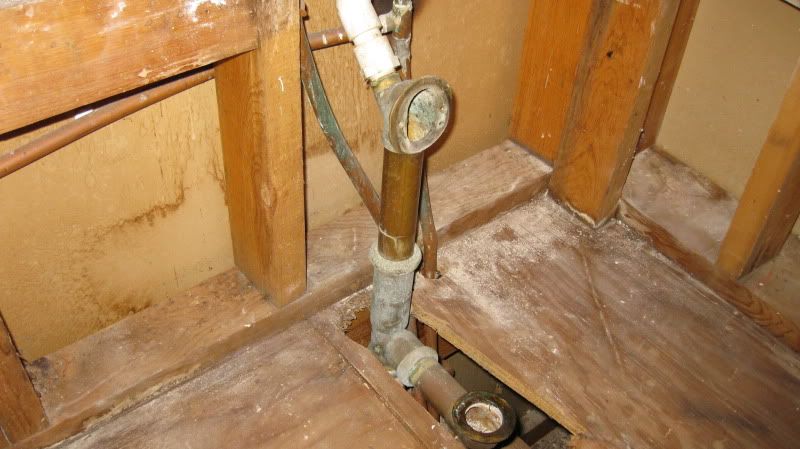stevevh
Member
Hi all,
Firstly, great forum with lots of good info! I recently started a remodeling project of a bathroom. After removing the walls and the original tub, I started seeking out a new modern tub that could fit the older plumbing. I found one but noticed that all the new tub drains are different from the one currently installed. This is where I hope one of you gurus can help.

In the above picture what is the PVC pipe that is attached to the the top of the brass drain and what is its purpose? I assume it is some kind of vent, as it runs up into the roof, but all the new drains no longer have this! Any info is much appreciated,
Thanks guys,
Steve
Firstly, great forum with lots of good info! I recently started a remodeling project of a bathroom. After removing the walls and the original tub, I started seeking out a new modern tub that could fit the older plumbing. I found one but noticed that all the new tub drains are different from the one currently installed. This is where I hope one of you gurus can help.

In the above picture what is the PVC pipe that is attached to the the top of the brass drain and what is its purpose? I assume it is some kind of vent, as it runs up into the roof, but all the new drains no longer have this! Any info is much appreciated,
Thanks guys,
Steve




